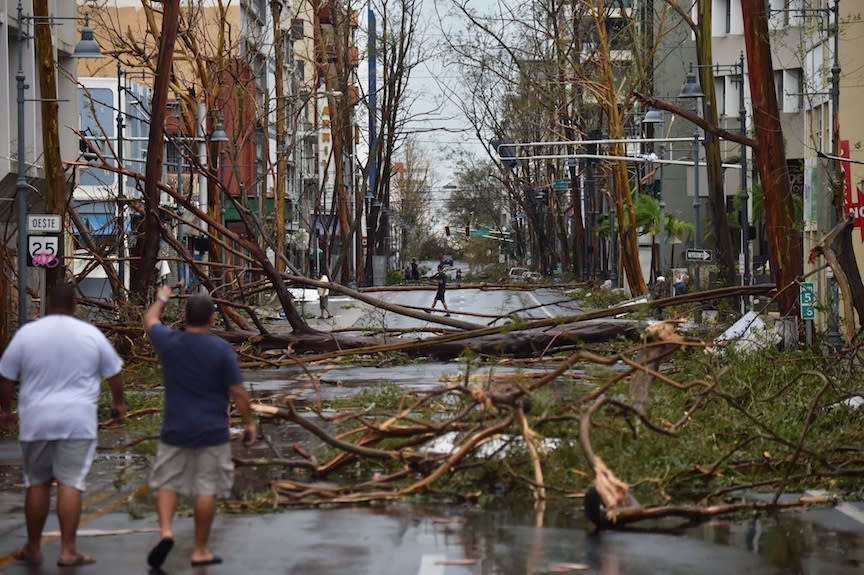
Rescuers fanned out to reach stunned victims Thursday after Hurricane Maria ravaged Puerto Rico, knocking out electricity to the entire island and triggering landslides and floods. The extent of the damage is unknown given that dozens of municipalities remained isolated and without communication after Maria hit the island Wednesday morning as a Category 4 storm with 155 mph winds, the strongest hurricane to hit Puerto Rico in over 80 years.
Uprooted trees and widespread flooding blocked many highways and streets across the island of 3.4 million residents, creating a maze that forced drivers to go against traffic and past police cars that used loudspeakers to warn people they must respect a 6 p.m. to 6 a.m. curfew imposed by the governor to ensure everyone’s safety. People resorted to rafts and kayaks to get around because flooding made many roads impassable.
“This is going to be a historic event for Puerto Rico,” said Abner Gomez, the island’s emergency management director. President Donald Trump approved a federal disaster declaration for Puerto Rico.
Previously a Category 5 with 175 mph (281 kph) winds, killer storm Maria hit Puerto Rico as the third-strongest storm to make landfall in the U.S., based on its central pressure. It was even stronger than Hurricane Irma when that storm roared into the Florida Keys earlier this month. In the capital of San Juan, towering eucalyptus trees fell nearly every other block over a main road dotted with popular bars, restaurants, and coffee shops, some of which were damaged.
Hurricane Irma sideswiped Puerto Rico on Sept. 6, leaving more than 1 million people without power but causing no deaths or widespread damage like it did on nearby islands. Maria, however, blew out windows at some hospitals and police stations, turned some streets into roaring rivers and destroyed hundreds of homes across Puerto Rico, including 80 percent of houses in a small fishing community near the San Juan Bay, which unleashed a storm surge of more than 4 feet.
“Months and months and months and months are going to pass before we can recover from this,” Felix Delgado, mayor of the northern coastal city of Catano.
Maria has caused at least 19 deaths across the Caribbean, including more than 15 in the hard-hit island of Dominica and two in the French Caribbean territory of Guadeloupe. Dominica Prime Minister Roosevelt Skerrit cried as he spoke to a reporter on the nearby island of Antigua. “We have buried in excess of 15 people,” he said. “It is a miracle there were not hundreds of deaths.”
One man died in Puerto Rico after being hit by flying debris. Maria had briefly weakened to a Category 2 storm before re-strengthening to Category 3 status Thursday with maximum sustained winds of 120 mph (195 kph). The hurricane was still dumping rain overnight Wednesday in Puerto Rico, where crumbled red roof tiles lay scattered across many roads, and curious residents sidestepped and ducked under dozens of black power lines still swaying in heavy winds.
The day of test and purification is just upon us. Signs of a most startling character appear, in floods, in hurricanes, in tornadoes, in cloudbursts, in casualties by land and by sea, that proclaim the approach of the end of all things. The judgments of God are falling on the world, that men may be awakened to the fact that Christ will come speedily.” The Review and Herald, November 8, 1892.
Source References
